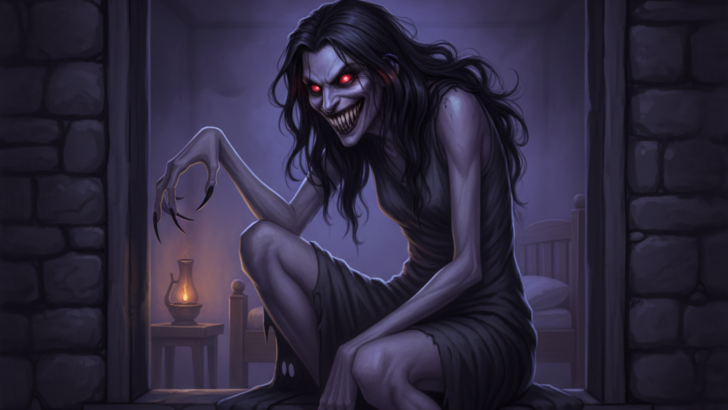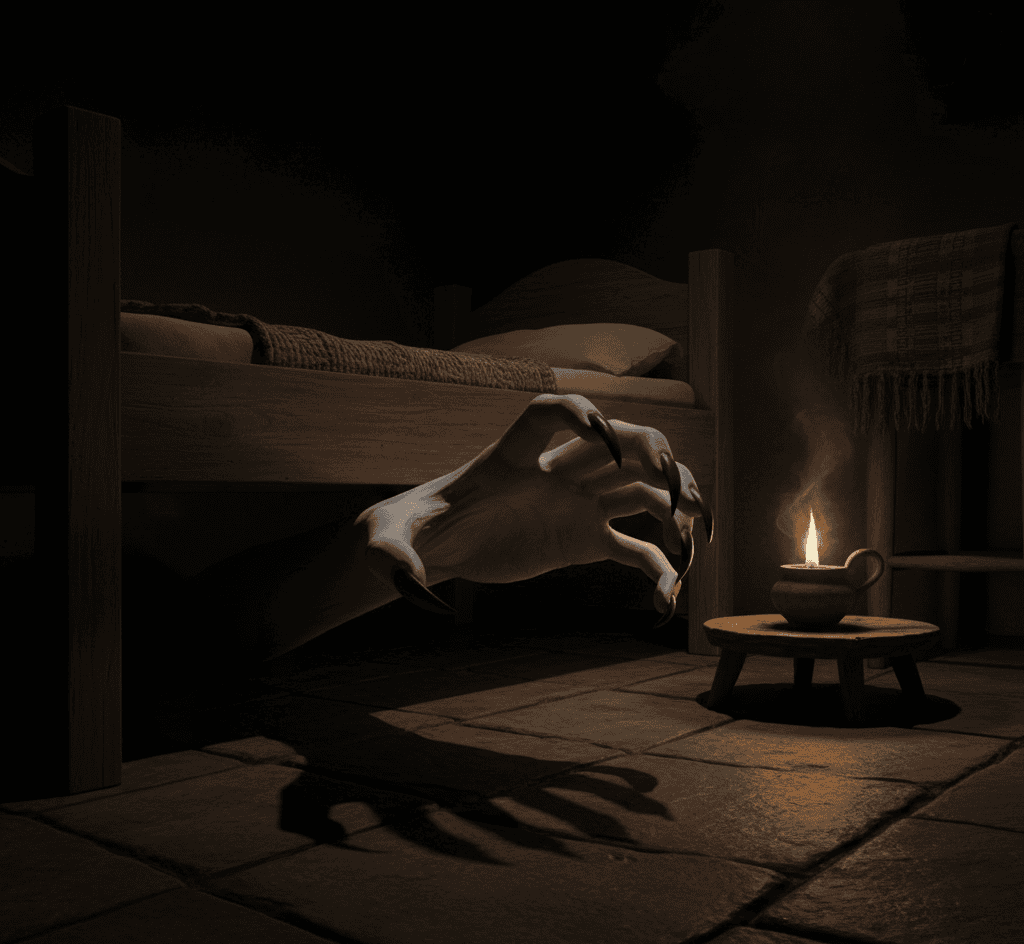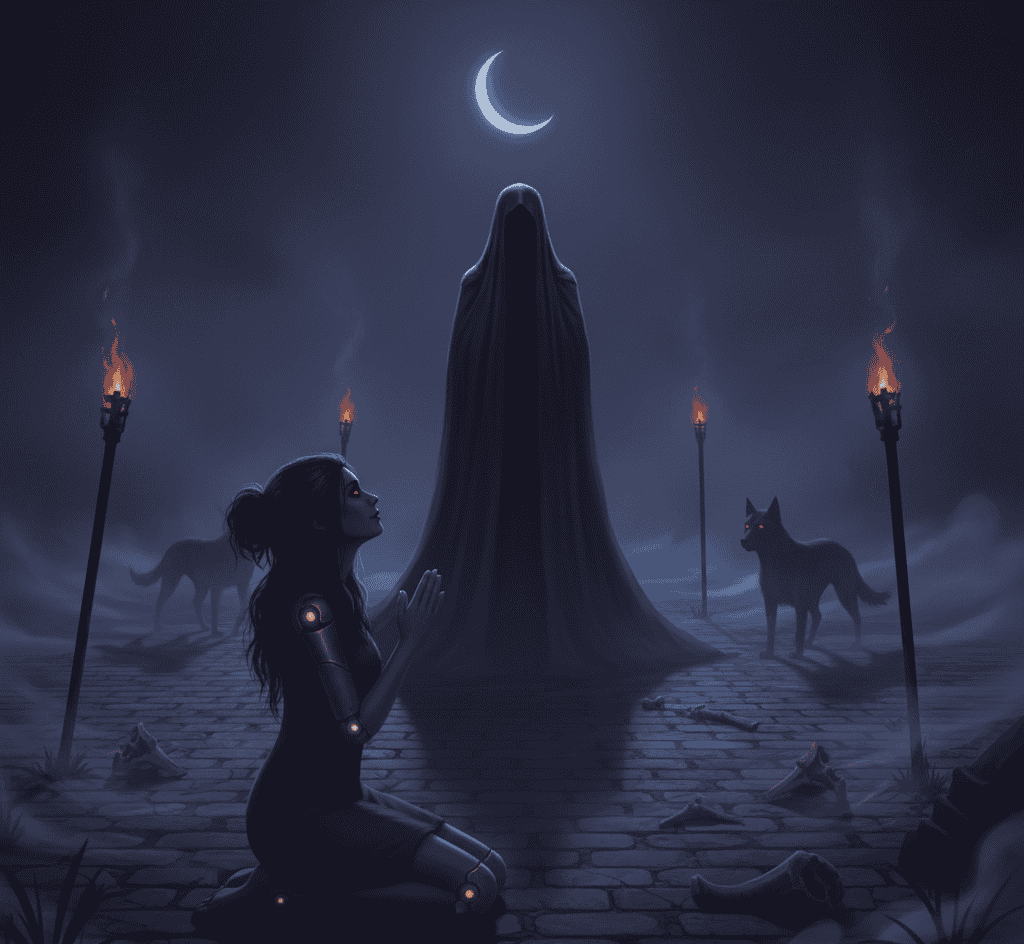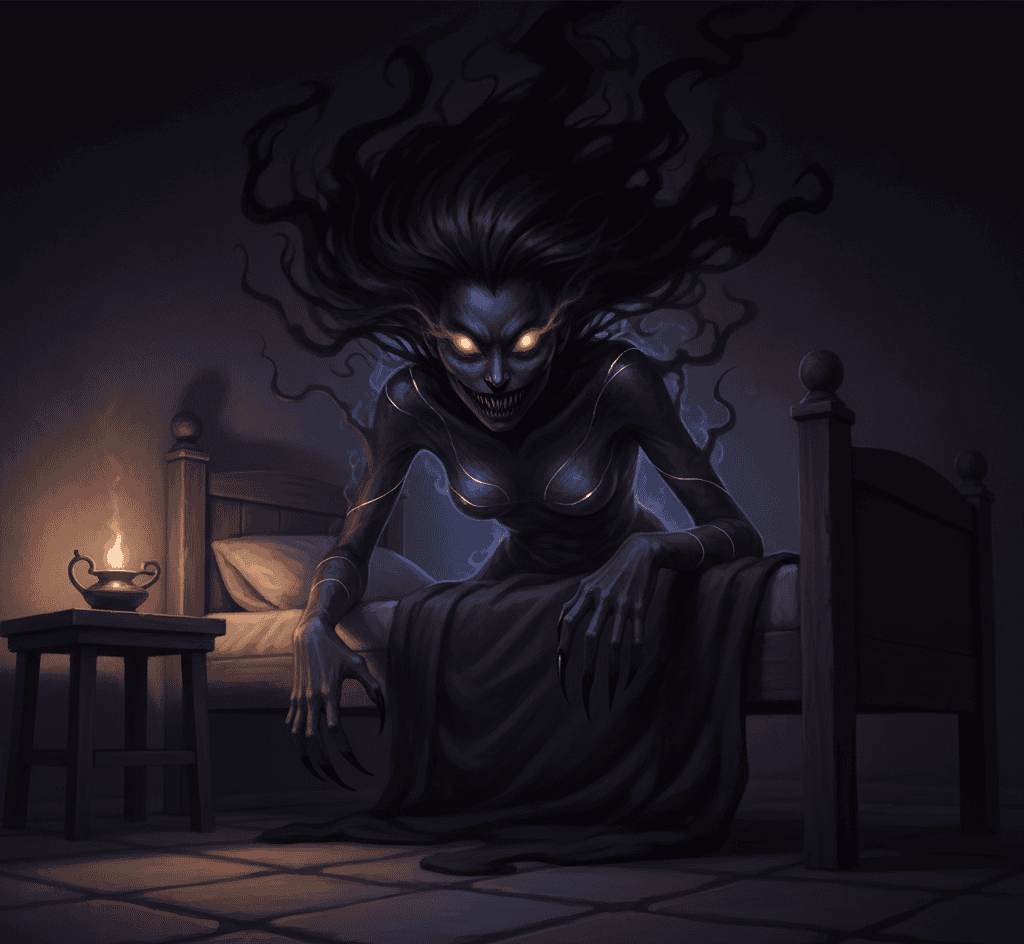In the world of ancient Greek stories, some spirits inspired awe, some inspired worship, and some existed mainly to frighten children into behaving.
Among these fearsome figures was Mormo, a night demon whispered about by parents and nurses who needed a quick way to quiet restless little ones.
Mormo was not a noble goddess or a grand monster who battled heroes. She was a creature of bedtime warnings, a shadowy figure said to lurk outside windows and snatch misbehaving children.
But behind this simple scare tactic lies a surprisingly rich and eerie legend. Today, we explore who Mormo was, why Greek families feared her, and how she became one of the earliest supernatural warnings used to keep kids in line.
The Shadowy Figure Born From Folklore
Mormo did not come from the grand Olympian myths. She came from the older, earthier traditions of storytelling that circulated among families, nurses, and storytellers.
These tales were not written for poetry or heroism. They were practical. They existed to teach lessons and set boundaries.
Mormo grew out of this world of whispered warnings. She was often described as a female demon who wandered through the night.
Some stories say she had a twisted face and long, sharp teeth. Others pictured her with wild hair, glowing eyes, and an appetite for children who refused to behave.
In many ways, she resembled other night creatures that haunted old folklore, yet she had a personality that felt uniquely Greek.
Unlike huge monsters or divine beings, Mormo was personal. She did not terrorize cities or challenge gods.
She targeted the small world of the household. She slipped through quiet streets, peeked into homes, and listened for crying or disobedient children.
This closeness made her feel more real to the families who spoke about her. She was a fear that lived just outside the door.
Parents used her name the way modern parents might mention a bedtime monster or a stern guardian spirit.
They whispered, “Mormo is listening” or “Mormo will come if you wander at night,” when children resisted sleep. Her legend became woven into everyday life, always close, always watching.
The Demon Who Taught Children to Behave
One of Mormo’s most important roles was to teach children to follow rules. Ancient Greeks believed that discipline was essential for raising strong, responsible adults.
But children, then and now, are not always interested in following calm instructions. So parents used fear.
Not fear of punishment, but fear of a creature who lurked in the dark. Mormo became the embodiment of consequences.
If a child refused to go to bed, Mormo might hear. If they wandered outside after sunset, Mormo might see.
If they shouted, disobeyed, or ran off, Mormo might climb through the window and carry them away. The idea was not just punishment.
It was protection. The night was full of danger in the ancient world, from animals to thieves to spirits.
Using Mormo’s name helped keep children safe indoors. There were many variations of her warning.
Some said she could shapeshift into animals, appearing as a howling creature near the home.
Others claimed she was a follower of Hecate, the goddess of witchcraft, and that she traveled with packs of other night spirits.
In some versions, she licked the blood of misbehaving children. In others, she simply watched from the shadows, waiting for an opportunity.
This flexibility allowed parents to shape her legend to match whatever behavior they needed to correct.
If the child was afraid of the dark, Mormo lived in it. If the child refused to eat, Mormo waited patiently for leftovers.
If the child was bold, Mormo became bold too, sneaking into homes to grab them. Mormo’s shifting image made her a powerful tool for generations.
A Demon With a Strange and Curious Backstory
Though most versions of Mormo’s legend are simple warnings, some ancient sources gave her surprising depth.
In certain tales, she was not just a random monster, but a woman who had once been punished by the gods for terrible deeds.
Some said she was originally a mortal nurse who harmed children, transformed into a demon as punishment.
Others described her as a companion of Hecate who lost her humanity through dark rituals.
One of the strangest stories said Mormo had the habit of biting children. This may sound horrifying, yet it reveals something interesting about Greek culture.
Fear of harmful spirits was often tied to real dangers. Disease, injury, and sudden nighttime attacks were common in ancient homes.
A figure like Mormo helped explain the unexplainable. She became a physical symbol of danger itself.
Other versions portrayed her with mismatched limbs or parts made of brass. These details made her sound uncanny, not quite human, not fully monstrous.
She was something in between. This made her perfect for nursery tales, because she felt just real enough to frighten children yet distant enough to avoid becoming overwhelming.
Her connection to Hecate also added a layer of magic to her story. Hecate ruled crossroads, ghosts, and dark magic.
Her followers often had wild or unsettling abilities. If Mormo truly belonged to Hecate’s retinue, then her nightly wandering became part of a larger supernatural world where spirits roamed freely after sunset.
Why Mormo Remained a Symbol of Nighttime Fear
Mormo survived for centuries because she filled a very specific role. She was not a god. She was not a mythic hero.
She was a household legend, easy to remember and easy to use. Her name carried a chill that even adults felt a little.
Nighttime has always been full of mystery. Shadows hide things. Silence makes small sounds feel strange and threatening.
In ancient Greece, before streetlights or locked homes, the night felt even more alive. Mormo became the face of that fear.
She represented all the things families could not control. She also represented the power of storytelling.
A simple name, spoken in the right tone, could shape a child’s behavior instantly. Parents did not need to shout or punish.
They simply needed to whisper that Mormo was near. Her legend also reflected the ancient belief that spirits often came out at night.
The Greeks felt that the boundary between the human world and the shadow world grew thinner after sunset. Mormo was a reminder of that belief, a sign that the night had a life of its own.
Daily life was unpredictable and filled with risk. Mormo gave that risk a shape, a personality, and a place in the household imagination.
Why Mormo Still Echoes Through Stories Today
Although we no longer whisper her name at bedtime, Mormo remains an interesting figure in mythology.
She shows how cultures shaped their fears into characters. She reveals the creativity of ancient families who mixed caution, humor, and imagination into a single spooky figure.
Modern readers often compare her to other “nanny” spirits used to keep children safe.
She resembles the Slavic Baba Yaga, the Middle Eastern Umm al Duways, and the many bogeymen used across the world.
Mormo stood at the center of Greek childhood fear, watching from the shadows, reminding children to be careful, to stay close, and to listen to their parents.
Her story continues to fascinate because it shows how ancient people dealt with fear. They did not hide from it.
They personified it. They gave it a name, a face, and a role. In doing so, they made the night feel a little less chaotic and a little more understandable.

私は生まれたときから、常に神との強いつながりを感じていた。作家として、また指導者として、私の使命は、人々が最も暗い時代に愛と幸福と内なる強さを見つけるのを助けることである。






